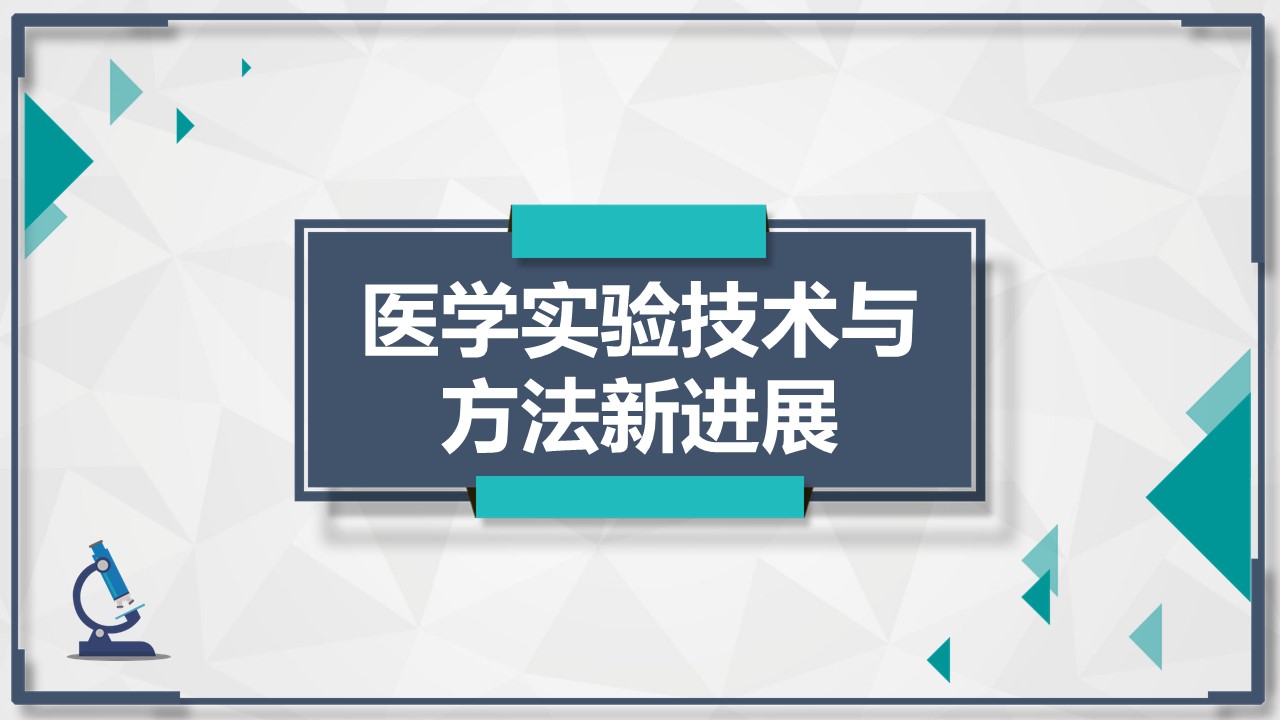
当前课程知识点:Diagnostics in Chinese Medicine > Week 7 Diagnosis methods: Observation (1) > 6.1.1 Observation of vitality > 6.1.1 Observation of vitality
返回《Diagnostics in Chinese Medicine》慕课在线视频课程列表
返回《Diagnostics in Chinese Medicine》慕课在线视频列表
同学们好
下面首先我们学习全身望诊
全身望诊 又称为整体望诊
是医生在诊查病人的时候
首先对病人的精神 色泽 形体和姿态
等整体的表现进行扼要的观察
以期对病情的寒热虚实和轻重缓急等
能获得一个总体的印象
全身望诊 就是强调诊察病人时
第一直觉印象的重要性
比如 有两个病人
一个是昏迷的
被担架抬过来看病 面色晦暗
另外一个是活蹦乱跳的过来看病
就这两个病人 我们看一眼 第一直觉就是
第一个病人病情比较重
第二个病人病情比较轻
因此 对病人第一直觉印象的观察
能对病人神的旺衰和病情的轻重
有一个初步的判断
全身望诊
包括望神 望色 望形 望态四个内容
我们分别进行讲解
首先我们来学习望神的内容
神 是指人体生命活动的总称
是对人体生命现象的高度概括
这个神 包括有两层含义
第一个是广义之神
又是指神气
它是指机体脏腑组织功能活动的外在表现
和精神意识状态的综合
我们应该如何理解
脏腑功能活动的外在表现呢
比如说肝主疏泄 主藏血
它在外的表现 与眼神 与神志
与筋骨活动有密切关系
心主血脉 它的外在
与人体的面色 精神意识思维活动
以及语言有密切的关系
脾主运化 它的外在表现
与人体的消化功能
与人体的胃口有关
肺主气司呼吸
它与人体的呼吸的均匀程度有密切关系
肾主藏精
主骨 生髓 通脑
所以人体的骨骼强健的外在表现
可以反映肾精充足与否
所以这个外在表现
比如说胃口好不好 肌肉是不是丰满
筋骨活动是不是灵活 情志是不是开朗
精神意识思维活动以及语言是不是清晰等等
都是脏腑功能活动的外在表现
这都可以理解为广义的神气
神的另外一层含义是指的狭义之神
它是指的神志
就是指心的神志活动
包括人的精神 意识和思维活动
所以 中医的神包括广义的神气和狭义的神志两个部分
它是人体的五脏六腑的功能活动的外在表现
以及人的神志活动的一个综合
因此 我们通过望神可以观察人体生命活动的外在表现
来判断病情
望神的原理是什么呢
望神的原理主要是
神是脏腑精气的外在表现
所以 望神可以了解五藏六腑的精气盛衰
判断病情的轻重和预后
因此《素问》有言
得神者昌 失神者亡
也就是说
得神的人 五脏六腑的精气充足
则病情比较轻 预后也比较好
而失神的人 五脏六腑的精气虚衰
病情较重 预后不良
神是脏腑功能活动的外在表现
具体体现在
人体的目光 色泽 神情和体态等方面
我们首先来看一看神的具体表现
第一个表现 就是两目
《灵枢》言 目者 心之使也
表明眼神是心神的外在表现
《灵枢》又言
五藏六腑之精气皆上注于目而为精
这表明目为脏腑精气汇聚之处
所以目的视觉功能
反映了五脏六腑的精气盛衰
如果两目神气充沛 精彩内含
运动灵活 视物清晰为有神
是脏腑精气充足的表现
如果两目浮光外露 目无精彩 运动不灵
视物模糊为无神
是脏腑精气虚衰的表现
因此我们说
观察两目的眼神是望神的重点
神的第二个具体表现 就是色泽
色泽 主要是指人体周身皮肤
尤其是以面部皮肤为主的色泽
《医门法律》说 色者 神之旗也
神旺则色旺 神衰则色衰
神藏则色藏 神露则色露
由此我们可以看出
皮肤的色泽荣润或枯槁
是脏腑精气盛衰的重要的表现
神的第三个具体表现 就是神情
神情 是指人的精神意识和面部的表情
是心神和脏腑精气的外在表现
如果心神正常 则神志清晰 思维有序
表情自然 反应灵敏
如果心神失常 则神志昏蒙 思维混乱
表情淡漠 反应迟钝
神的第四个具体表现 就是体态
体态是指的形体动态
它是人体机能强弱的外在表现
如果形体丰满 动作自如
说明人体的机能强壮
如果形体瘦削 动作艰难
说明人体的机能衰弱
望神
除了重点观察以上的两目 色泽 神情和形态以外
还要结合语言
呼吸 舌象及脉象等综合判断
根据神的盛衰和病情的轻重
一般可分为得神
少神 失神 假神
以及神乱五个方面
我们首先来看看得神
这张图片就是得神的病人
得神 通常表现为 神志清楚
语言清新 两目精彩 呼吸平稳
面色荣润 肌肉不削 动作自如 反应灵敏的人
得神 与人体的正气充足 精气充盛有关
这种人要么就不得病 是健康人
要么即使得病 但是正气没有损伤 病情也比较轻
所以 得神通常见于健康
或者是病情比较轻的人群
失神
又称为无神
是精亏神衰
或邪盛神乱的重病的表现
通常见于久病虚证的病人
或者是邪实的病人
我们这里面看到四个失神的病人
第一个是癌症晚期的病人
第二个是肺源性心脏病 脏器衰竭的病人
第三个是病情危重的病人
最后一个是子宫癌晚期的病人
这四个失神病人 均表现有为
精神萎靡 语言错乱
两目晦暗 呼吸气微
面色无华 形体羸瘦
动作艰难 反应迟钝
这是正气大衰 精气亏虚的表现
通常这种失神的病人见于慢性病
久病的病人
病情比较危重
而下面这种失神的病人 是一个发高烧的病人
她表现出 神志昏迷 说胡话 中医称为神昏谵语
或者突然昏倒 呼吸急促
烦躁不安 四肢抽搐
或循衣摸床 撮空理线
或两手握固 牙关紧急
这是邪热亢盛导致的
机体功能严重障碍 气血津液失调
这是邪实的重症
这种邪实的失神病人
通常见于急性病 病情也是比较重
所以 我们看到失神的病人
通常见于病情重的病人
它可以是慢性病 也可以是急性病
慢性病通常是正气大亏
急性病通常是邪热亢盛
我们学习了得神和失神
还有一种就是少神
少神是介于得神和失神之间的一种神气的表现
又称为神气不足
它的主要表现是
精神萎靡不振 少气懒言 两目乏神
面色少华 倦怠乏力 肌肉松软 动作迟缓
这种少神的病人
通常是属于正气不足 精气轻度的损伤
通常病情比较轻 或是在疾病的恢复期
或者平时体质就比较虚弱的病人
生活中
或者临床上
亚健康的病人
也是属于少神的范畴
假神 主要见于久病重病之人
脏腑精气本已极度衰竭 而突然出现某种
神气暂时好转的虚假表现
这就是为假神
比如
原来目光呆滞
突然眼神有光 但却浮光外露
本来面色晦暗
突然表现出面色有华
但是 两颧泛红如妆
原来神志昏迷 或者是精神极度的萎靡
突然神志清醒
想见亲人 言语不休
但是精神烦躁不安
原来身体沉重难移
突然想起床活动 但不能够真正自己走动
本来毫无食欲 久不能食
突然想吃饭 且食量大增
这些突然表现出来的好转假象
就是假神
假神的出现是因为脏腑精气极度的衰竭
正气将脱
阴不敛阳 虚阳外越的表现
是阴阳即将离决的前兆
古人把这种比喻成回光返照
或者是残灯复燃
这是危重病人临终前的一种表现
这里面我们需要注意一下
假神和病情好转的区别
一般来说 假神主要见于垂危的病人
病人局部的症状突然好转
与整体的病情并不相符合
而且维持比较短暂
病情很快恶化
而重病好转的病人
他的精神好转是逐渐表现出来的
并且与整体的状况好转是相一致的
比如 饮食渐渐的增加
面色渐渐的红润
身体渐渐的康复等等
神的最后一个分类就是神乱
神乱 是指精神错乱 神志失常
临床上常表现为焦虑恐惧 狂躁不安
淡漠痴呆 或者是卒然昏倒
常见于脏躁证
狂病 癫病
痴呆病以及痫病
比如
焦虑恐惧的病人 常表现为 时时恐惧
焦虑不安 心悸气促
不敢独居一室
这是因为心胆气虚 心神失养的表现
比较常见于卑惵和脏躁等这种
郁病类的病人
狂躁不安的病人常表现为
狂躁妄动 胡言乱语
少寐多梦 打人骂人 不避亲疏
这是由于痰火扰乱心神所致
常见于狂病的病人
淡漠痴呆的病人 多表现为
表情淡漠 神志痴呆
喃喃自语 哭笑无常
悲观失望
这是由痰浊蒙蔽心窍
或者先天禀赋不足所导致的
通常见于癫病
或者是老年性痴呆
卒然昏倒的病人 常表现为
突然昏倒 不省人事
口吐白沫 四肢抽搐
口中如作猪羊之声
过一会就会苏醒
醒后跟正常人一样
这是由于脏器失调 肝风夹痰上扰
闭阻清窍所导致的病变
比较常见于痫病的病人
以上是全身望诊之望神的内容
本节课就讲到这里
-Introductory remark
--QQ groups、WeChat public account
-Introduction
--【Discussion 1】Why do you want to take this course?
-Unit test for Introduction
-1.1 Yin-yang theory
-1.2 The theory of five elements
--1.2.1 The theory of five elements
--1.2.2 Application of the theory of five elements
-Frequently Asked Questions
-Unit test for week 1
-2.0 Outline
--【Discussion 2】How to understand the holistic view centered on the Zang Fu theory?
-2.1 Liver
--【Discussion 3】Why is repose more important than vigorous exercise in recuperation for patients with
-2.2 Heart
-2.3 Spleen
-2.4 Lung
--2.4 Lung
-2.5 Kidney
-2.6 Six fu organs
-Frequently Asked Questions
-Unit test for week 2
-3.1 Qi
--3.1 Qi
-3.2 Blood
-3.3 Body fluid
-3.4 The relationship of qi, blood and body fluid
--3.4 The relationship of qi, blood and body fluid
--【Discussion 4】A discussion about the theory of qi, blood and body fluid
-Frequently Asked Questions
-Unit test for week 3
-4.0 Outline
-4.1 Six exogenous factors
--4.1.2 Nature and pathogenicity of wind and cold
--4.1.3 Nature and pathogenicity of summer heat and damp
--4.1.4 Nature and pathogenicity of dryness and fire
-4.2 Etiology of visceral impairment
--4.2 Etiology of visceral impairment
-Frequently Asked Questions
-Unit test for week 4
-5.0 Outline of inquiry
--【Discussion 5】If you were a patient, how would you describe your condition to your doctor first?
-5.1 Inquiry of Chills and fever
--5.1.1 Chills and fever(Aversion to cold with fever)
--5.1.2 Chills and fever(Chills without fever)
--5.1.3 Chills and fever(Fever without chills)
--5.1.4 Chills and fever(Alternative chills and fever)
--【Discussion 6】How to understand "if you have clinical manifestations of cold, that is exterior syndr
-5.2 Inquiry of perspiration
-Frequently Asked Questions
-Unit test for week 5
-5.3 Inquiring of pain
--【Discussion 7】How to understand "stagnation leading to pain and innourish leading to pain"?
-5.4 Inquiring of head, body, thorax and abdomen
--5.4 Inquiring of head, body, thorax and abdomen
-5.5 Inquiring of ears and eyes
--5.5 Inquiring of ears and eyes
-5.6 Inquiring of sleep
-5.7 Inquiring of food and drink, appetite and taste
--5.7 Inquiring of food and drink, appetite and taste
-5.8 Inquiring of defecation and urination
--5.8.1 Inquiring of defecation
--5.8.2 Inquiring of urination
-5.9 Inquiring of infantile and women's disease
--5.9 Inquiring of infantile and women's disease
-Unit test for week 6
-6.0 Outline of Observation
--【Discussion 8】Please use the whole body inspection (including the expression, complexion and figure)
-6.1.1 Observation of vitality
--6.1.1 Observation of vitality
-6.1.2 Observation of the color
--6.1.2.1 The content, principles of inspection of the color
--6.1.2.2 Indication of diseases by five colors
--【Discussion 9】How do you understand the normal complexion of a normal people?
-6.1.3 Observation of the appearance
--6.1.3 Observation of the appearance
-6.1.4 Observation of figure and posture
--6.1.4 Observation of figure and posture
-Unit test for week 7
-6.2.1 Observation of head and face
--6.2.1 Observation of head and face
-6.2.2 Observation of five sensory organs
--6.2.2.1Observation of five sensory organs(observation of eyes,ears,nose)
--6.2.2.2Observation of five sensory organs(observation of lips,teeth and gums,throat)
-6.2.3 Observation of body
-6.2.4 Observation of limbs
-6.2.5 Observation of two lower orifices
--6.2.5 Observation of two lower orifices
-6.2.6 Observation of skin
-6.3 Observation of excreta
-6.4 Observation of infantile fingerprints
--6.4 Observation of infantile fingerprints
-Frequently Asked Questions
-Unit test for week 8
-7.1 Outline of tongue inspection
--7.1.1 The morphology and structure of the tongue
--7.1.2 The principle of tongue examination
--7.1.3 The method and precaution of tongue examination
--7.1.4 The content of tongue examination, normal tongue
-7.2 Inspection of tongue structure
--7.2.1 Observe the color of tongue
--7.2.2 Observe the shape of tongue
--7.2.3 Observe the states of tongue
--7.2.4 Observation of sublingual vein
-7.3 Observation of tongue coating
--7.3.1 Observation of coating texture
--7.3.2 Observe the color of coating
-7.4 Clinical significance of tongue diagnosis
--7.4 Clinical significance of tongue diagnosis
--【Discussion 10】Why to observe the tongue can be used to diagnose disease?
-Unit test for week 9
-8.1 The principle of pulse examination
--8.1 The principle of pulse examination
-8.2 The regions and methods of pulse examination
--8.2 The regions and methods of pulse examination
-8.3 The elements of pulse examination and the normal pulse
--8.3 The elements of pulse examination and the normal pulse
-8.4 Characteristics and significance of pulse
--8.4.1 Superficial pulse, deep pulse, slow pulse, rapid pulse
--8.4.2 Surging pulse, thin pulse, long pulse, short pulse
--8.4.3 Feeble pulse, forceful pulse, slippery pulse, uneven
--8.4.4 Taut pulse, tense pulse,soggy pulse, moderate pulse
--8.4.5 Knotted, slow-regular-intermittent, irregularly abrupt
-8.5 Similar pulse, concurrent pulse, pulse indicating deterioration of visceral qi۞
--8.5 Similar pulse, concurrent pulse, pulse indicating deterioration of visceral qi۞
--【Discussion 11】Why is complex pulse more common than single-factor pulse?
-8.6 Women’s pulse, children’s pulse
--8.6 Women’s pulse, children’s pulse
-8.7 The clinical significance of pulse diagnosis
--8.7 The clinical significance of pulse diagnosis
-Unit test for week 10
-9.1 Listening
-9.2.1 Abnormal sound
-9.2.2 Abnormal language
-9.2.3 Respiratory abnormality
--9.2.3 Respiratory abnormality
-9.2.4 Cough
--【Discussion 12】How to observe the patient's cough sound and sputum changes to determine whether the
-9.2.5 Abnormal sounds of the stomach and intestines
--9.2.5 Abnormal sounds of the stomach and intestines
-9.3 Smelling
--【Discussion 13】How to diagnose by smelling?
-Unit test for week 11
-10.1 The method, meaning and precautions of palpation
--10.1 The method, meaning and precautions of palpation
-10.2 Contents of palpation
--10.2.1 Palpating chest and hypochondrium
--10.2.2 Palpating stomach and abdomen
--10.2.4 Palpating hands and feet, palpating acupoints
--【Discussion 14】How to determine whether external or internal injuries?
-Unit test for week 12
-Conclusion
-Final Exam
--Final Exam

